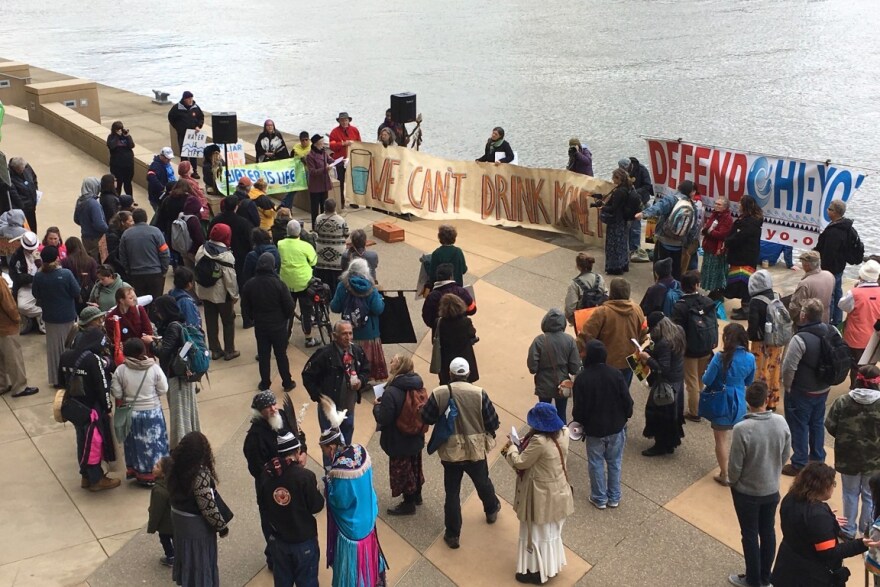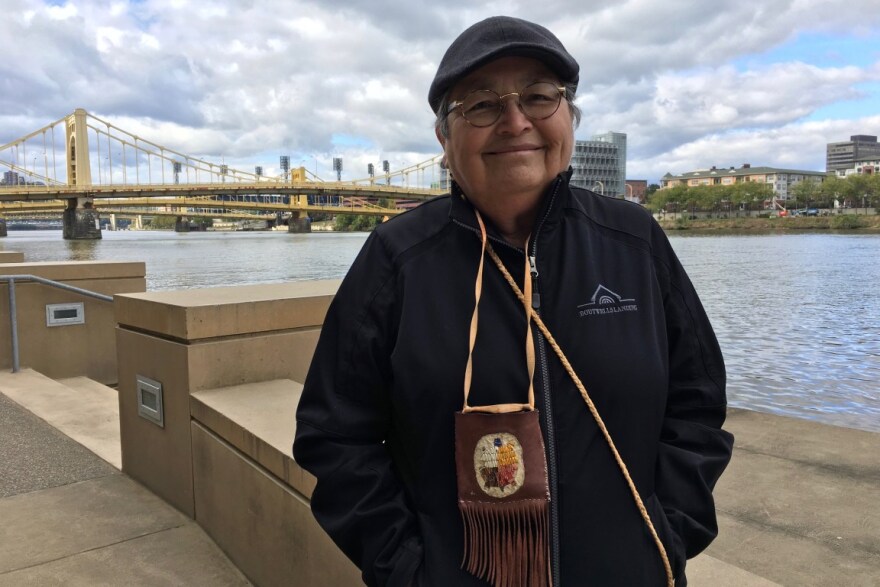The Ohio Valley has long been known for coal and making steel, but the future, according to some predictions, is natural gas and plastics. Richard Regula, is a commissioner in Stark County, Ohio, and is working to expand the petrochemical industry.
Along the Ohio River there's anticipation for the next phase of the natural gas industry. Beyond cheap electricity, Ohio is looking to use shale gas to rebuild its manufacturing base.
“What’s going to happen in this region in the Utica and Marcellus Shale plays is going to impact us positively for the next 100 years in my opinion, at least 50,” Regula said.
More than 2400 gas wells have been drilled using hydraulic fracturing in Ohio since 2012.
Regula is talking not only about the cheap gas from that, but the spinoff industries and development many expect. Excitement has been building since the announcement in 2016 that Shell should be building an ethane cracker plant in Beaver County.
Right now, the ethane, which is a component of the natural gas that’s produced at the region’s wells, is exported to China, Europe or piped to the Gulf Coast.
Building a petrochemical hub
Shell’s $6 billion facility along the Ohio River in Pennsylvania will “crack” the ethane at very high temperatures to make ethylene locally.
“Ethylene is a major raw material that goes into the making of polyethylene,” explained Heather Rose-Glowacki of the trade group, American Chemistry Council. “And polyethylene goes into thousands of products that are used by people every day.”
Polyethylene is used to make everything from plastic bags to car parts to medical devices. A study by the American Chemical Council looked at the ethane supply in Ohio, Pennsylvania, West Virginia, and Kentucky. They concluded that there could be up to five ethane crackers supported in the region, creating an Appalachian petrochemical hub as an alternative to the Gulf Coast.
Supporters of this idea like to repeat these numbers: 12,000 manufacturers who use plastics are already located within a day’s drive–600 miles–of the region.
But those manufacturers don’t have access to a local supply of polyethylene.
“Right now, this industry operates using product that is transported from the Gulf Coast,” said
Iryna Lendel, Director of the Center for Economic Development at the Maxine Goodman Levin College of Urban Affairs at Cleveland State University. Ethane crackers close the loop between gas wells and plastic manufacturers.
“That’s the whole point–to link our oil and gas that we are pumping out, to use this, refine it, and use this within the region,” Lendel said.

A decision is expected soon about construction of a second ethane cracker, a $10 billion dollar facility would be built along the river in Ohio. A company called Mountaineer NGL storage could start storing natural gas liquids, like ethane, in salt caverns in the region as soon as next year.
According to Lendel, the region would also need more plastic and resin manufacturing, more chemical manufacturing, and more petroleum refineries to build the supply chain for a real petrochemical hub.
“The more product we refine within the region, the more and longer we keep this product within our economies and the more we capture benefits and economic wealth,” she said.
More than 75,000 people in Ohio are already employed in the plastics industry, second nationally to California, according to the Plastics Industry Association. Pennsylvania has 47,000 people working in plastics.
Local economies expecting a boost
Officials in Stark County, Ohio say the Shell cracker is already creating new business interests there.
Ray Hexamer, president of the Stark Economic Development Board, finds it exciting. In the past six months, three companies have come to them looking at opportunities in the plastics industry.
“So, what it means for Northeast Ohio–they’re good paying jobs, those jobs will elevate the economic environment for our community. We all get lifted by a rising tide,” Hexamer said.
A new, yet to be published study by economists at Washington and Jefferson College,south of Pittsburgh, bolsters that argument. It finds that counties with ethane crackers have higher individual earnings than the national average, more than $5,600 per year. The study found that counties adjacent to cracker plants also saw an earnings boost.
What about the environment?
But of course, locking the region into a petrochemical hub of gas wells, pipelines, chemical cracking and plastics manufacturing is concerning to many people.

Outside a meeting of Marcellus Shale industry leaders in Pittsburgh this week, about 60 people, including members of various native tribes, gathered to protest. Standing where the Allegheny meets the Ohio River, Sharon Day of Minnesota, a member of the Ojibwe Nation, remembered her walk along 980 miles of the Ohio a few years ago.
“This a beautiful, beautiful river,” she said. “It has undergone so much stress and pollution over the years, that it’s going to really require effort by everybody to make her healthy again.” The Ohio River is the drinking water source for five million people, and many people fish and boat on it.
While supporters of petrochemical development say they trust regulators to protect public safety and the environment, Cheryl Johncox, of the Sierra Club’s Beyond Dirty Fuels Campaign, based in Columbus, Ohio, doesn’t think they should.
“We can’t assume the regulators are taking care of it anymore,” she said.
Johncox pointed to the recent explosion of a natural gas pipeline that destroyed a home in Pennsylvania as an example of the safety concerns. When it comes to keeping the air and water clean, Johncox gave a litany of regulatory rollbacks underway by the current administration in Washington.
“They are trying to gut the Clean Air Act, the Clean Water Act, all the components,” she said. “The methane emissions program; they’re attacking the Ohio River Water Sanitation Commission. There’s a no holds barred on those protections.”

The region can't pass up this chance to rebuild its industry
In Ohio, Stark County Commissioner Richard Regula doesn’t see reason for concern about the environment. His family has a long history in Ohio politics, including his father Ralph Regula’s 18 terms in Congress.
“My father was the founder of the Ohio EPA, and I’m carrying on his legacy to protect the environment,” Regula said. “But to me this is a once in a lifetime, or once in a generation opportunity.”
Regula is pushing for roadway improvements to help expansion of a Marathon oil refinery in his county, and looks forward to all the jobs he says he expects in the coming years.
Read this story and more from our partners, The Allegheny Front.




